
Maximizing Efficiency: 4 Lidar Innovations in Heavy Machine Manufacturing

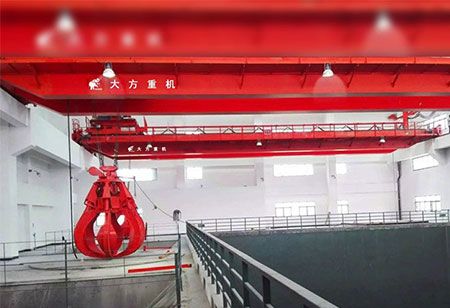 With the development of industrial automation, the production speed has been improved, and the level of intelligence of heavy machinery manu- facturing directly affects the overall efficiency of the factory. The application of lidar directly aff- ects production efficiency. Lidar (laser detection and ranging) is equivalent to radar technology. Lidar emits fast light pulses to objects or the surrounding environment, and then measures the time it takes for the light to return.
With the development of industrial automation, the production speed has been improved, and the level of intelligence of heavy machinery manu- facturing directly affects the overall efficiency of the factory. The application of lidar directly aff- ects production efficiency. Lidar (laser detection and ranging) is equivalent to radar technology. Lidar emits fast light pulses to objects or the surrounding environment, and then measures the time it takes for the light to return.
Learn about the following 4 new applications of machinery manufacturing, which will greatly im- prove the efficiency of your working environment:
- Lidar is used for Garbage Grab Cranes to achieve fully automated operation
- Lidar is used for RTG Rubber Tyred Gantry Cranes for Container Handling to improve port handling efficiency
- Lidar is used for AGV Automated Guided Vehicle to realize automatic handling of warehouse goods
- Lidar is used in Automated Stacker Cranes to promote intelligent warehouse management
Lidar is used for garbage grab cranes to achieve fully automated operation
A fully automatic Garbage Grab Cranes, also known as waste handling crane, using "PLC+2D lidar” as the core of the control system hardware structure combined with the movement of the crane cart, can be realized:
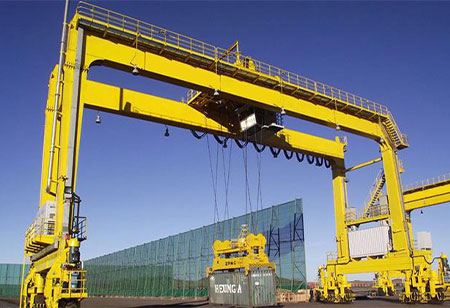 Measure the height of the garbage surface
Measure the height of the garbage surface
The scanning and measurement of the garbage bin are realized by using 2D lidar combined with the movement of the cart. The 2D lidar is installed on the cart and connected to the industrial computer via a network cable.Under the fixed condition of the cart, the lidar measures the height of the garbage at the position of the profile line, and the measurement results are fed back to the industrial computer in the form of polar coordinate points, and the software performs coordinate transformation to obtain the coordinate information of the measurement points on the profile line.
Realize the selection of safe garbage reclaiming locations
In the process of automatic feeding, moving, and mixing, the grabbing action of garbage is involved. The surface of the garbage in the garbage bin varies in height. After obtaining the height data of the garbage everywhere in the garbage bin, the data is further processed to automatically calculate the appropriate reclaiming location.
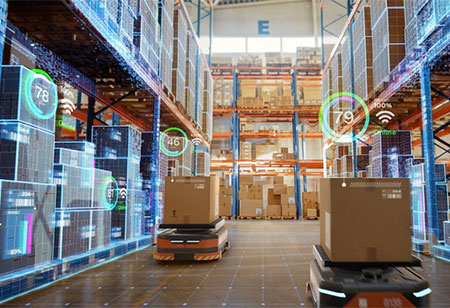 Program list method to coordinate and manage crane operations
Program list method to coordinate and manage crane operations
To achieve the goal of fully automatic unattended operation, it can achieve effective management of automatic operations, coordinate feeding, moving, and mixing work, and the system operation is stable and reliable, and the operation efficiency is high.Implement fully automated operation.Solve the problem of garbage accumu- lation and grabbing (when the garbage handling crane is out of material in the incinerator, it needs to grab the fermented garbage for feeding action, and when the garbage crane at the discharge port accumulates too high, it needs to be moved, and the mixing of old and new garbage is carried out the rest of the time.
Lidar is used for rtg rubber tyred gantry cranes for container handling to improve port handling efficiency
The crane requires manual correction and positioning by the driver when the cart is running, which increases the difficulty of operation of the cart and also increases the labor intensity of the driver. With the application of lidar technology in ports, DAFANG CRANE discovered the installation of "lidar and image recognition and positioning technology" on crane carts. In this way, the high-precision correction and positioning functions of the carts can be realized, and the automatic positioning of the RTG carts can be effectively improved.
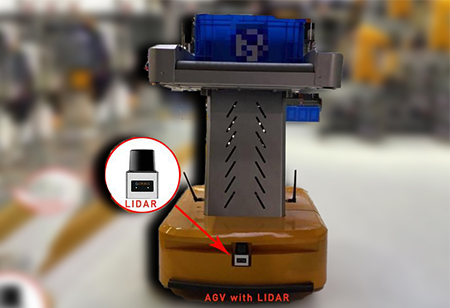 Lidar is used for agv automated guided vehicle to realize automatic handling of warehouse goods
Lidar is used for agv automated guided vehicle to realize automatic handling of warehouse goods
"LIDAR-assisted navigation" can enable AGV electric flat-top vehi- cles to travel along the specified path, while combining safety protection and various load-shifting functions. It is reported that there are two main types of lidar currently used in mobile robots:
- First, the navigation radar, which is responsible for the path planning and guidance of the AGV.
- The second is the obstacle avoidance radar, responsible for safety protection in the AGV travel area.
- To maximize the accuracy of autonomous positioning and navigation of unmanned forklift AGV in uncertain environments, the “LIDAR+SLAM positioning and navigation technology” is mainly used to autonomously locate, motion control, and avoid obstacles on the forklift, realizing the automatic handling of warehouse goods in complex scenarios.
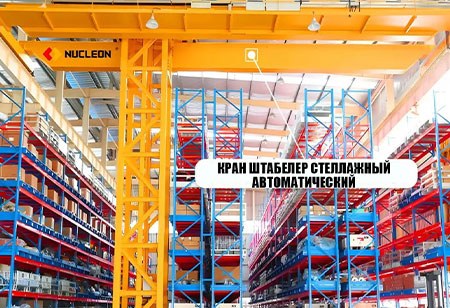 Lidar is used in automated stacker cranes to promote intelligent warehouse management
Lidar is used in automated stacker cranes to promote intelligent warehouse management
Smart logistics is also one of the industries with the most appli- cations of lidar, covering the whole process from handling to warehousing. Lidar can assist the automated stacker cranes in realizing the automatic entry and exit of goods. The stacker is equipped with lidar to ensure accurate obstacle avoidance when the stacker is moving, and it can also be used to assist in positioning. This kind of three-dimensional intelligent warehousing based on stackers has been widely used in various manufacturing scenarios, especially in the lithium battery industry.
Conclusion
Automation of heavy machinery production is a necessary condition for market viability.It improves productivity, safety, and accuracy, while also saving time and money. Lidar is a very useful and versatile technology that can be used in all aspects of all other functions from smart cranes and robot navigation to warehouse automation. It's time to consider how this technology can improve your business's bottom line by improving processes.

